#Space
Text

Full Pink Moon 2024 l Andrew McCarthy
#moon#full moon#astrophotography#astronomy#space#pink moon#night#stars#sky#solar system#nasa#universe#galaxy#planets
1K notes
·
View notes
Text
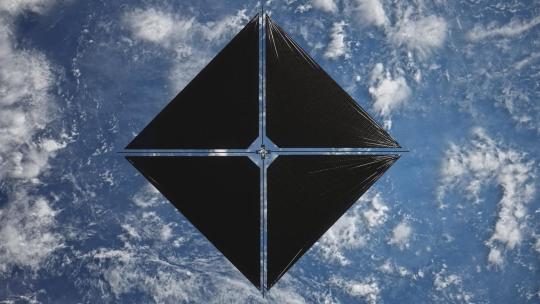
Setting Sail to Travel Through Space: 5 Things to Know about our New Mission
Our Advanced Composite Solar Sail System will launch aboard Rocket Lab’s Electron rocket from the company’s Launch Complex 1 in Māhia, New Zealand no earlier than April 23, at 6 p.m. EDT. This mission will demonstrate the use of innovative materials and structures to deploy a next-generation solar sail from a CubeSat in low Earth orbit.
Here are five things to know about this upcoming mission:
1. Sailing on Sunshine
Solar sails use the pressure of sunlight for propulsion much like sailboats harness the wind, eliminating the need for rocket fuel after the spacecraft has launched. If all goes according to plan, this technology demonstration will help us test how the solar sail shape and design work in different orbits.
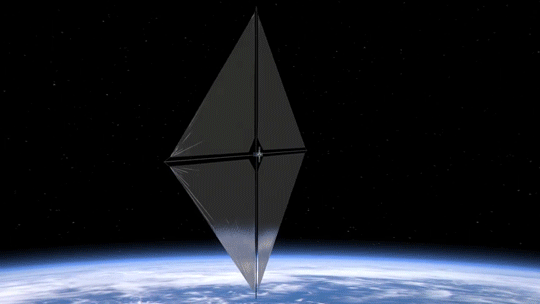
2. Small Package, Big Impact
The Advanced Composite Solar Sail System spacecraft is a CubeSat the size of a microwave, but when the package inside is fully unfurled, it will measure about 860 square feet (80 square meters) which is about the size of six parking spots. Once fully deployed, it will be the biggest, functional solar sail system – capable of controlled propulsion maneuvers – to be tested in space.

3. Second NASA Solar Sail in Space
If successful, the Advanced Composite Solar Sail System will be the second NASA solar sail to deploy in space, and not only will it be much larger, but this system will also test navigation capabilities to change the spacecraft’s orbit. This will help us gather data for future missions with even larger sails.
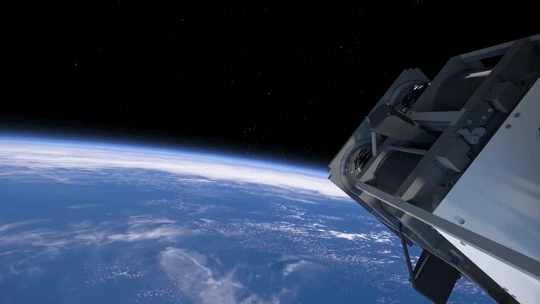
4. BOOM: Stronger, Lighter Booms
Just like a sailboat mast supports its cloth sails, a solar sail has support beams called booms that provide structure. The Advanced Composite Solar Sail System mission’s primary objective is to deploy a new type of boom. These booms are made from flexible polymer and carbon fiber materials that are stiffer and 75% lighter than previous boom designs. They can also be flattened and rolled like a tape measure. Two booms spanning the diagonal of the square (23 feet or about 7 meters in length) could be rolled up and fit into the palm of your hand!

5. It’s a bird...it’s a plane...it’s our solar sail!
About one to two months after launch, the Advanced Composite Solar Sail System spacecraft will deploy its booms and unfurl its solar sail. Because of its large size and reflective material, the spacecraft may be visible from Earth with the naked eye if the lighting conditions and orientation are just right!
To learn more about this mission that will inform future space travel and expand our understanding of our Sun and solar system, visit https://www.nasa.gov/mission/acs3/.
Make sure to follow us on Tumblr for your regular dose of space!
994 notes
·
View notes
Text

NGC 6164, Dragon's Egg
486 notes
·
View notes
Text
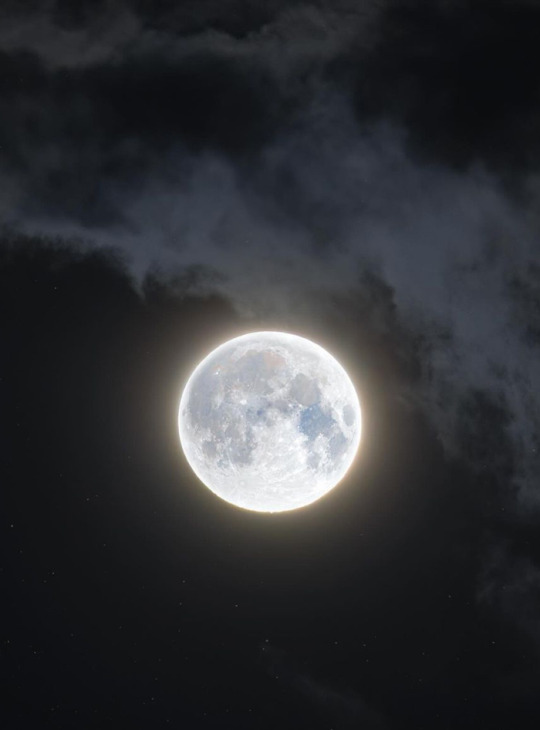
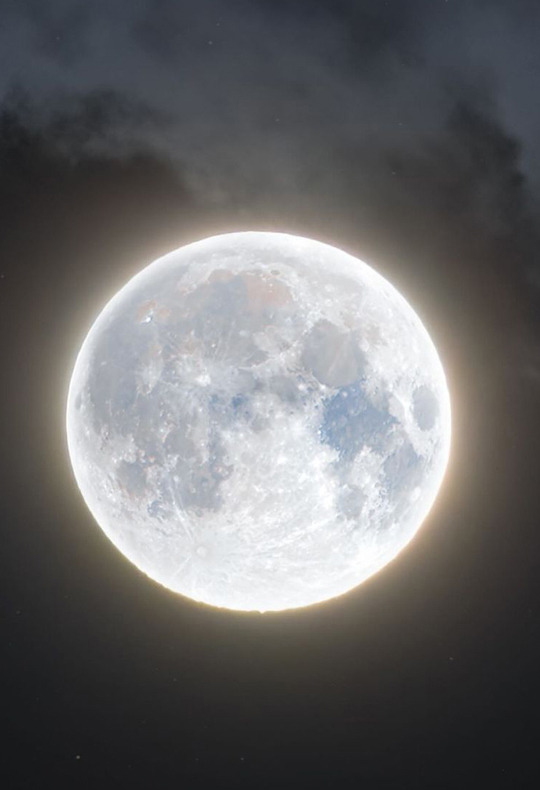

April Full Moon © astronycc
#full moon#astrophotography#nasa#space#stars#pink moon#night sky#solar system#moon#universe#astronomy#cosmos#galaxy#planet
434 notes
·
View notes
Text
thinking about how like. as a kid growing up in the light-polluted suburbs, space was always somewhere else. it was in the eyepiece of a telescope, star clusters and the andromeda galaxy and the orion nebula (good luck seeing any other galaxies or nebulae from suburbia) all faint and fuzzy, and outside the eyepiece, nothing. just a handful of stars in a not-that-dark sky. it was either that or look up hubble pics
i knew, in theory, that the night sky was space. but in practice i found that hard to believe since the sky i could see barely resembled the wonders of the cosmos described to me in documentaries or books. that telescope eyepiece was like a gateway into another world where faint hints of these things really did exist, because they didn't exist in my sky
and then i started going to dark sky sites, and it's all just. there. it's real. you can just see the plane of our galaxy with its star clouds and dust lanes
one time, a friend and i stopped in the middle of nowhere in kansas on the way back from a road trip. it was the darkest and most remote night sky i've ever seen. she pointed to a fuzzy little cloud fairly close to the horizon, like a puff of steam rising from the spout of the teapot of sagittarius. it was the lagoon nebula. she also pointed out the andromeda galaxy, a distinct smear on the sky
not with a telescope, but with the naked eye. everything was just there! sure, it didn't lookk like hubble pics, but it wasn't just the night sky anymore - it really was space
i think one of the saddest things about light pollution is that we live in a time where humans have unprecedented knowledge about the universe and our place in it. we can look at features of the night sky and understand the immensity and significance of it all. you can look at the puff of steam in sagittarius and know that suns are being born there
but for most people, these facts are distant and irrelevant, because they can't see them in the sky above their heads, and i think that's a tragic loss for our species
321 notes
·
View notes
Text
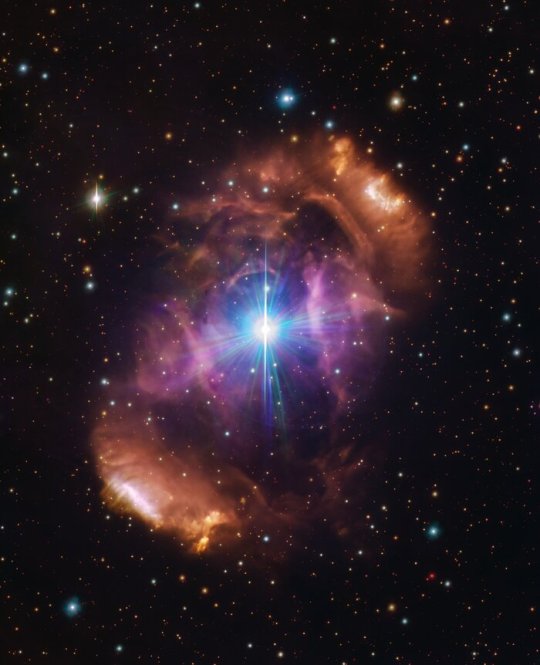
This image, taken with the VLT Survey Telescope hosted at ESO’s Paranal Observatory, shows the beautiful nebula NGC 6164/6165, also known as the Dragon’s Egg. The nebula is a cloud of gas and dust surrounding a pair of stars called HD 148937.
In a new study using ESO data, astronomers have shown that the two stars are unusually different from each other — one appears much younger and, unlike the other, is magnetic. Moreover, the nebula is significantly younger than either star at its heart, and is made up of gases normally found deep within a star and not on the outside. These clues together helped solve the mystery of the HD 148937 system — there were most likely three stars in the system until two of them clashed and merged, creating a new, larger and magnetic star. This violent event also created the spectacular nebula that now surrounds the remaining stars. Credit:
Credit: ESO
277 notes
·
View notes
Text

Tigris
Galaxy tiger was long overdue
Find me and my art elsewhere!
#tiger#big cats#feline#animals#animal art#space#tiger art#galaxy#watercolor#watercolor painting#traditional art#artists on tumblr#art#painting
307 notes
·
View notes
Text


S3E16: The Mark of Gideon ⋆.˚ ✧ · ˚⊹ .
#ugh he's beautiful with those backdrops#HELLO#space#spock#leonard nimoy#scifi#science fiction#sci fi#classic#television#screencaps#my edit#star trek#star trek tos#star trek the original series
223 notes
·
View notes
Text
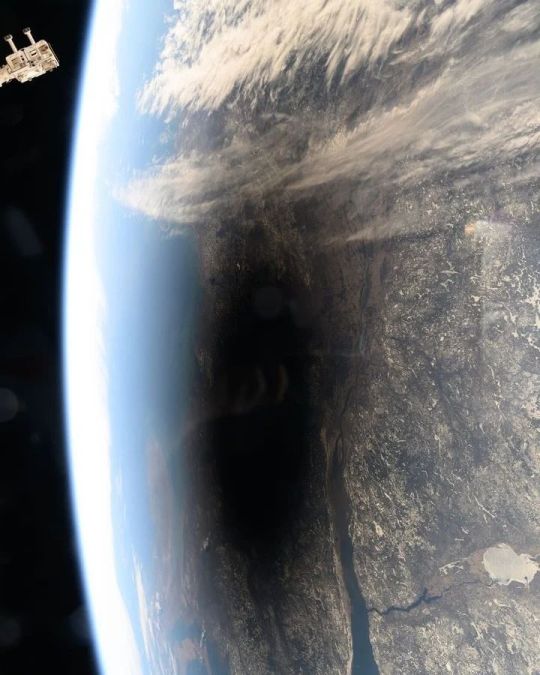
Space view of moon's shadow on earth during eclipse
#astronomy#astro community#astrophotography#science#cosmos#photography#space#solar system#2024 solar eclipse#solar eclipse
291 notes
·
View notes
Text
212 notes
·
View notes
Text

Hubble Views a Vast Galactic Neighborhood by NASA Hubble Space Telescope
229 notes
·
View notes
Text

April's Full Pink Moon rising at StonehengeUK
#moon#full moon#space#pink moon#astrophotography#astronomy#universe#night#stars#sky#uk#stonehenge#solar system#galaxy#planets
313 notes
·
View notes
Text

NGC 2359 - Thor’s Helmet
space.by.jase on Instagram
176 notes
·
View notes
Text

Dance of Light
456 notes
·
View notes
Text
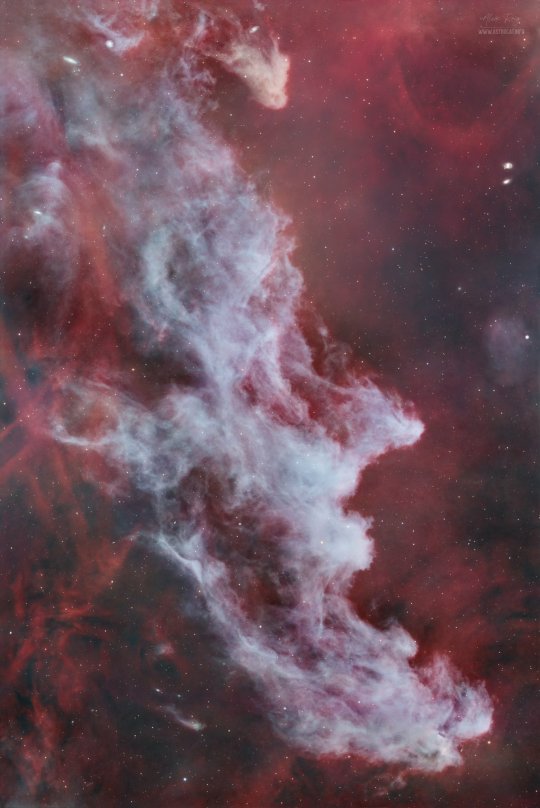
Profile of Cosmic Witch ©
#space#witch head nebula#astrophotography#universe#stars#night sky#solar system#galaxy#nebula#astronomy#nasa#planet#cosmos
436 notes
·
View notes
Text
so idk if any of ya'll knew but apparently Voyager 1 has been out of contact with nasa for the past five months and contact has only just been reestablished! it takes 22.5 hours to send messages to Voyager 1 and another 22.5 to receive messages back. this little machine has been telling us about instellar space (space between systems) for years now and a chip responsible for sending the data packages stopped working so nasa scientists figured a work around that actually managed to work and now, now little Voyager 1 is going to be able to talk to us again.
like i'm so genuinely happy about this and like we really are the generation that fell in love with little robot explorers aren't we
#Space#News#Voyager 1#Science#I'm so happy we can talk to Voyager 1 again lmao#Like this makes me happy and I need happy rn
179 notes
·
View notes